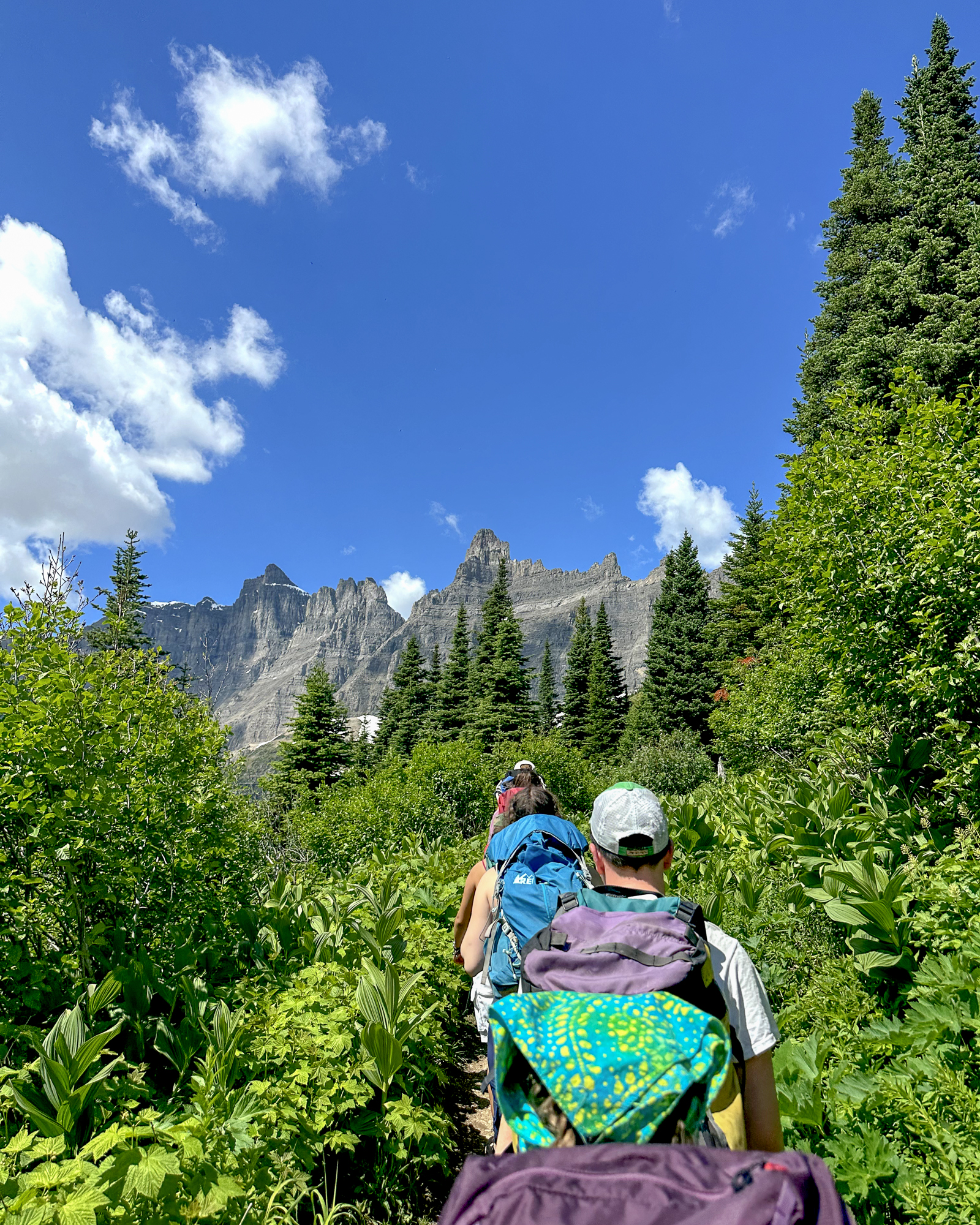Submitted by Anna Lundquist (College of Wooster)
Glacier National Park, Montana saw almost three million visitors over the course of its open season in 2023, most headed for attractions like the famous Going-to-the-Sun-Road, the iconic Many Glacier Hotel, and natural spectacles such as the wildlife, alpine scenery, and glacial lakes. As a student researcher staying in the Park for several weeks this summer, I had the opportunity to meet a lot of those visitors and share in their excitement to be in the Park & learn about our work.
To be honest, at the beginning of the trip, interacting with the public while out in the field was a part of the trip I was most nervous about. However, I was surprised by how quickly interacting with the public became one of my favorite parts of the day. Seeing us setting up our coring vessel (two kayaks lashed together with space in between to allow us to stick the corer into the lake) people approached us curiously to find out more about our research, and their excitement about what we were doing was infectious!
Over the course of our research, we met a guy who offered to take pictures of us as we did our coring with a camera as long as my arm, a little boy curious about the “stripes” in the rocks he was tossing into the water from the shore, and his dad, interested in the sediment cores we were collecting. We even met an older couple around my grandparents’ age, who were there doing their own ‘citizen science’ research on loon populations in the Park! Out on the trail, carrying our gear back and forth from our research sites, we encountered a number of people who started talking to us because they were curious as to why we were carrying paddles and no boat — and stayed to hear more about our sediment cores and what we planned to do with them.
In addition to talking with the public in the midst of doing science, we also got to interact with people in the Park during our daily life. In the camp store (our daily pilgrimage to procure hot chocolate and coffee in the mornings and ice to restock the cooler in the evenings) Continental Divide through hikers were often there resting up, only a few days away from their destination at the Canadian border. One afternoon, I met a couple all the way from British Columbia who were biking the Highline Trail, which climbs up along the very top of the peaks that form the Continental Divide. On our day off, our group made the almost five mile hike up to Iceberg Lake, a lake directly fed by alpine snow melt and named for the giant chunks of ice floating over much of the surface of the lake. People congregated at the shore at the end of the long, hot, uphill trail, and as members of our group made a full body dip into the icy water, the whole crowd would cheer.
Staying in the campground as long as we did gave us a chance to watch fellow visitors come and go, both humans and otherwise — most notably, a grizzly bear that wandered through the campsite while we were out in the field one afternoon! Other non-human visitors included a ground squirrel whose den was in a corner of our campsite, about ten thousand mosquitos, and Dempsey, a 19-year-old Himalayan cat introduced to us by his owner, who offered us the opportunity to take a selfie with Dempsey.
Over the course of our two-week stay in the Park, we even got to know the people who make the visits of so many people possible, Glacier National Park’s Rangers. At the nightly Ranger Campfire talks, we got to meet the famous Bear Bobs, two Rangers (both named Bob) who, between the two of them, have come to Glacier for over 100 summers, teaching the public about bears and how to be safe around them, who also happened to be friends of Kelly, our project leader! On the Fourth of July, we were lucky enough to be invited to the Ranger Independence Day potluck and got to sit and chat with a whole group of Rangers, who were as interested to hear about the work we were doing in the Park as we were to hear about theirs!
The highlights of doing research in a National Park like Glacier are numerous, and I had so many of them in mind when I applied to do research there as a Keck student. The breath-taking scenery, wildlife, chance to unplug and reconnect with nature; these were all things I was looking forward to in the months leading up to this project. However, an unexpected highlight I’ll take away from the two weeks I spent living and working in Glacier National Park were the huge array of people we got to meet, excited, curious and eager to learn more about the Park and its natural beauty, just like me!




